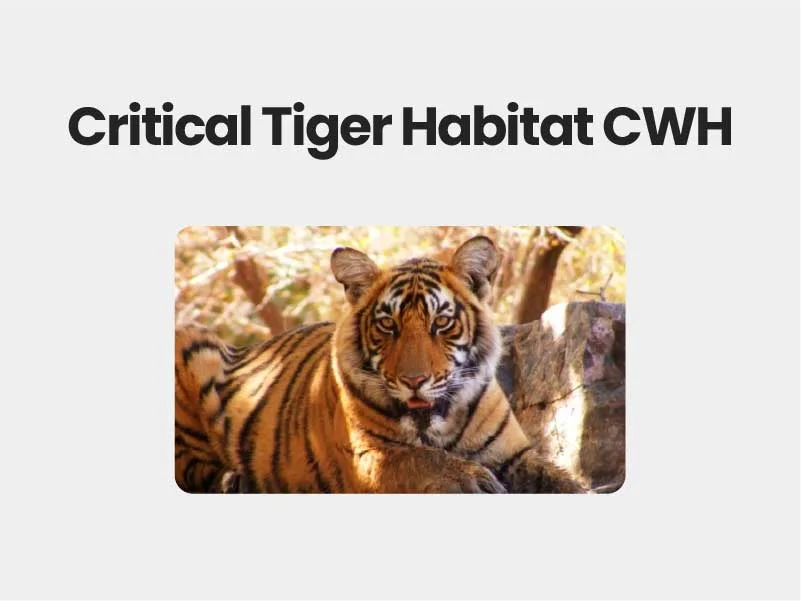
Critical Tiger Habitat CWH
Critical Tiger Habitat – As per the report on tiger census that was released ahead of International Tiger Day on July 29 2020-India has seventy percent of the world’s tiger population and 50 tiger reserves in the country presently. Tigers were observed to be increasing at a rate of 6 percent per annum in India from 2006 to 2018
Importance of tiger conservation
- Tiger is an umbrella species.
- the only natural habitat for the iconic tiger species- the Bengal Tige
- promotes ecotourism
- Tiger needs large healthy forests so tiger conservation leads to forest conservation.
- Tiger conservation boosts in Biodiversity conservation
India Tiger conservation is regarded as a success model in the world. The Indian efforts in this line include
- National Tiger Conservation Authority (NTCA)
- Tiger census
- Project Tiger
- conservation Assured | Tiger Standards (CA|TS) framework extended to all fifty tiger reserves across the country.
- Providing suitable habitat by declaring Tiger reserves
- Declaration of Core which has the legal status of Wildlife Sanctuary or National Park. These areas are free of all forestry operations and human activities.
Critical Tiger habitats (CWH)
- Critical wildlife/Tiger habitats (CWH) are defined under the Forest Rights Act, 2006,
- critical wildlife habitat means such areas of National Parks and Sanctuaries which are required to be kept as inviolate for the purposes of wildlife conservation
- It is determined and notified by the Central Government in the Ministry of Environment and Forests after an open process of consultation by an Expert Committee.
Issus with Critical Tiger habitats
- It dilutes the FRA 2006
- New guidelines have superseded free, prior, and informed consent of the gram sabha before declaring Critical Tiger habitats
Wayforward
- Forest rights should be settled before declaring Critical Tiger habitats
- There should be public consultation like in the case of Ecologically Sensitive areas.
Enroll today with the best civils service academy and take your first step towards your Civils journey.
Feel free to reach out to us for any inquiries, collaborations, or support. We’re here to help.

